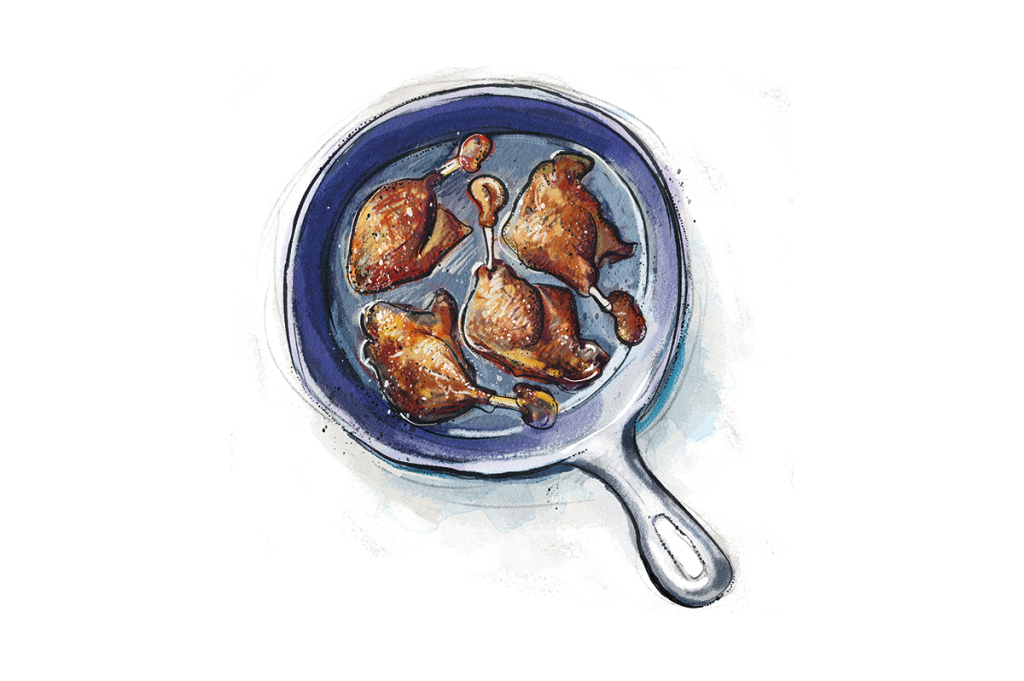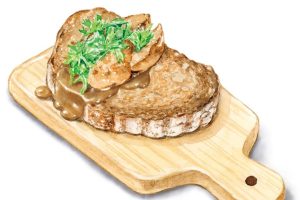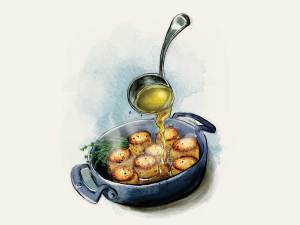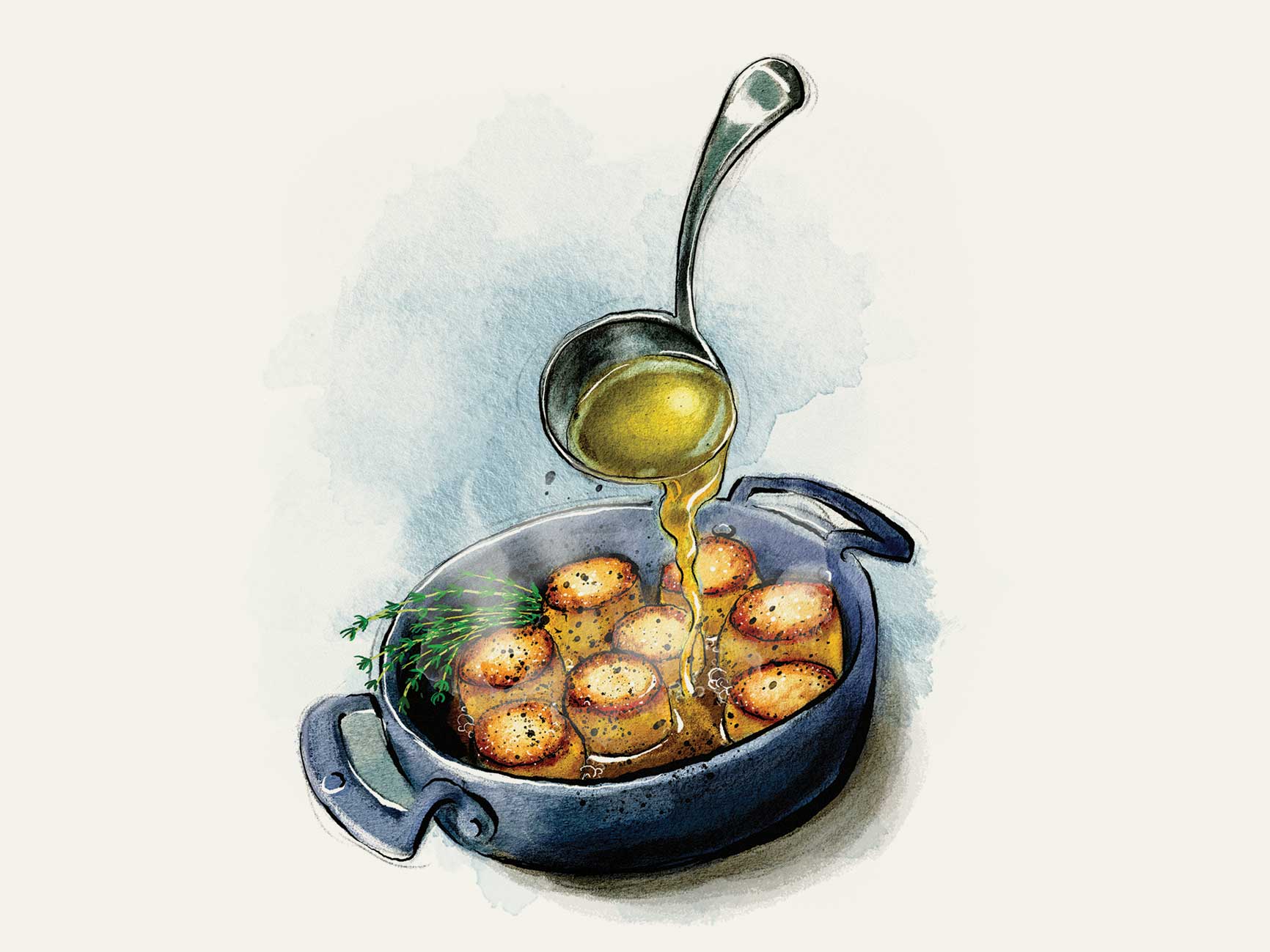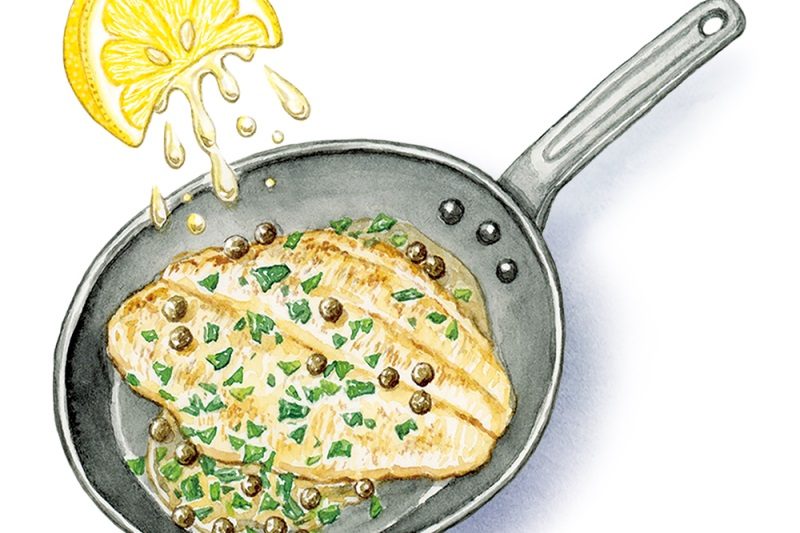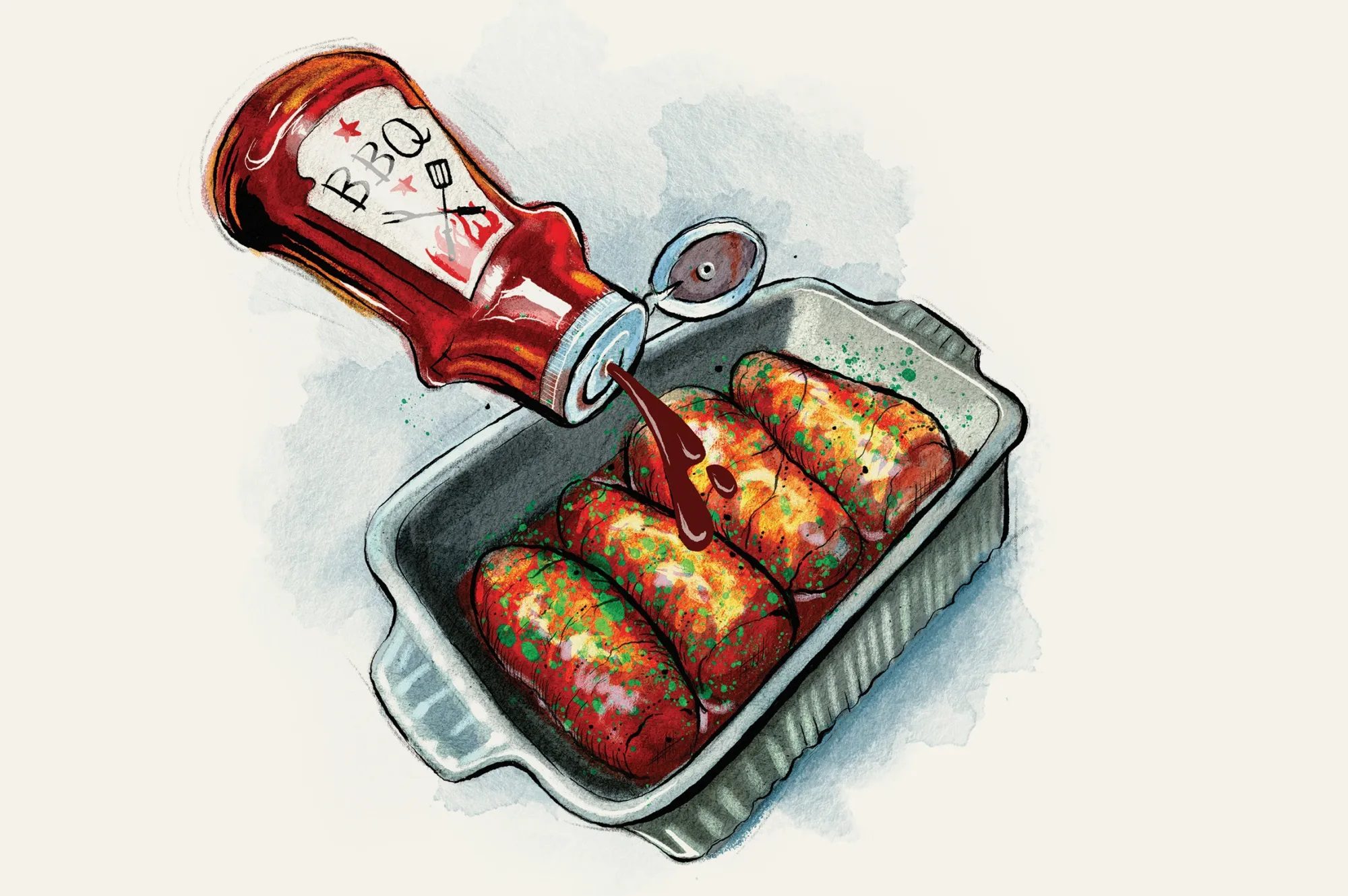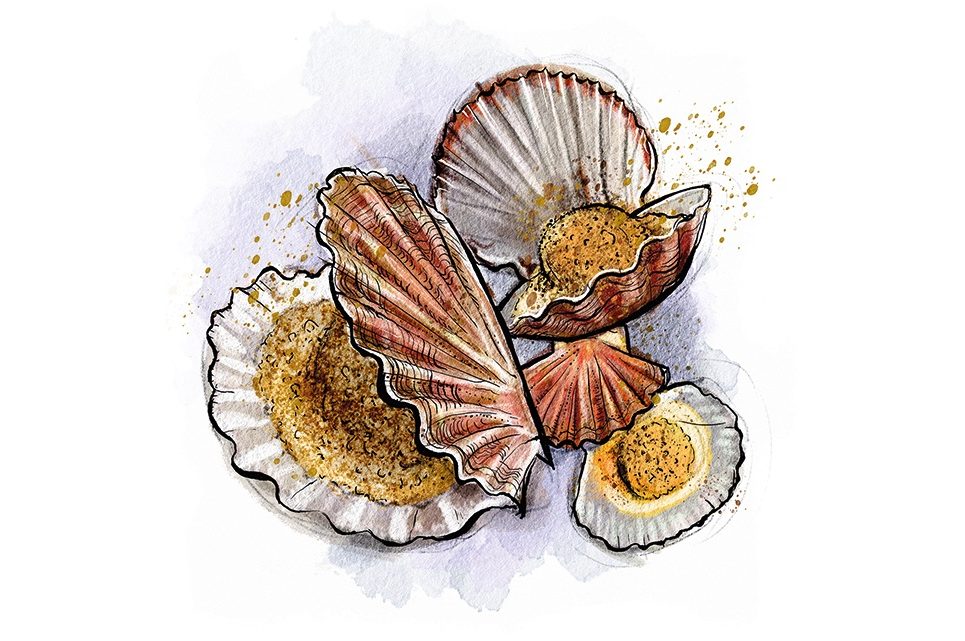Of all the myriad ways of preserving, confit always strikes me as wonderfully improbable. The ability to preserve meat just through cooking it slowly in its own fat feels particularly wild. And the fact that this simple, unlikely process makes the meat more tender, more flavoursome than any other way of handling it only adds to the magic.
Of course, if I pause for a moment and engage my brain, it’s very obvious why it’s such a successful method: most preservation relies on salting to reduce water levels, or excluding oxygen from the preserved food, both of which prevent bacteria from growing. Duck confit takes a belt and braces approach. The duck is salted (and sometimes spiced) for twenty-four hours — and once cooked, it is entirely submerged in fat, which protects it from air. Treating the duck in this way means that it can then be stored in a cool place for months.
The slow cook ensures that the dark, rich, slightly gamey meat is so soft it can be cut with a spoon
Confit, like most preservation, was borne out of necessity in an age when refrigeration and a year-round food supply were pipe dreams. It ensured that meat would be available and safe far beyond its season and usual shelf life.
Speaking of refrigeration, I am going to be a bit of a party pooper. While technically, yes, the whole point is to negate the need for the fridge, without going through a full canning process, or using a much higher proportion of salt, there is a small possibility of it spoiling or even being harmful. So it is important that you refrigerate duck confit — but once you do, it really can be kept for months without any problems.
Duck confit is a preserve of traditional French cooking, but is particularly associated with Gascony. It has remained beloved in France and beyond long after we gained the ability to chill or freeze meat because it is still one of the best ways of cooking duck. The salt concentrates the natural flavors, and the slow cook ensures that the dark, rich, slightly gamey meat is so soft it can be cut with a spoon, the bone lifting clean away from the silky duck with the slightest prod. It is, for me, one of the most delicious, irresistible ways of eating a bird.
Naturally, with a technique that spans cultures and centuries, there are many different ways to skin (or confit) a cat: all sorts of herbs and spices and alliums for the cure, various amounts and types of salt, wildly differing lengths of cooking time. My version is uncharacteristically simple. I don’t mind gilding the lily when it comes to pastry concoctions or a massive pavlova, but when it’s preserving meat, especially a meat that is as packed with flavor as duck, I don’t think it needs a huge amount of fussing. A generous amount of coarse salt, some crushed peppercorns, juniper berries — if you fancy, nothing turns on them — and then lots and lots of duck fat. That’s it.
I’m going to level with you: the first time you confit, you’re going to need some extra duck fat. If you’re living in Gascony with a host of untrimmed ducks available, you can probably render enough duck fat without nipping to the supermarket for a jar. Otherwise, you’ll need to buy some to get you going. After that, though, you can become self-sufficient, reusing the duck fat over and over, until it becomes too salty for your taste. Now you are in an endless, delicious cycle of preserving duck legs; you need never be more than half an hour or so from a perfectly cooked duck leg again. What a joy.
You can use the cooked duck to make rillettes or cassoulet, but in the spirit of simplicity, the recipe I give here is very quick and straightforward: cooking the legs skin-side down in a pan produces the best, crispest, most delectable skin, before you transfer the pan to the oven for thirty minutes, just long enough to warm through the tender meat. Serve with braised lentils or, if you’re my father, duck-fat-roasted potatoes.
Serves: 4
Takes: 35 mins
Prep: 4 hours cooking and curing
- 4 duck legs
- 1 tsp juniper berries
- 1 tsp black peppercorns
- 3½ oz coarse salt
- 23 oz duck fat
- Lightly crush the juniper and peppercorns with a pestle and mortar, or with the end of a rolling pin, and combine with the salt. Rub the spiced salt into the duck legs, covering them evenly, then place in a covered container in the fridge for twenty-four hours
- Wash the cure from the legs, then pat dry with kitchen paper
- Preheat the oven to 230°F, and melt the duck fat in a pan over a low heat. Place the duck legs in a snug single layer in an oven- and hob-safe dish. Cover with the melted fat, ensuring that the legs are completely submerged and place on the hob until the fat is just starting to simmer. Cover with aluminum foil, transfer to oven and cook for three and a half hours
- If you don’t intend to cook and serve the duck immediately, let the legs and fat cook and solidify. Scrape the fat from the legs, and place them in a clean glass or plastic container. Re-melt the duck fat (avoiding any dark meat juices which will have jellified, and make excellent stock) and pour it back over the legs, completely covering them
- To cook the confit duck, remove from the fat, scraping off any excess, and place the legs skin-side down in a non-stick pan over a medium heat. Cook for four minutes, before carefully turning the legs over, and placing in a 355°F oven for thirty minutes
This article was originally published in The Spectator’s UK magazine. Subscribe to the World edition here.



